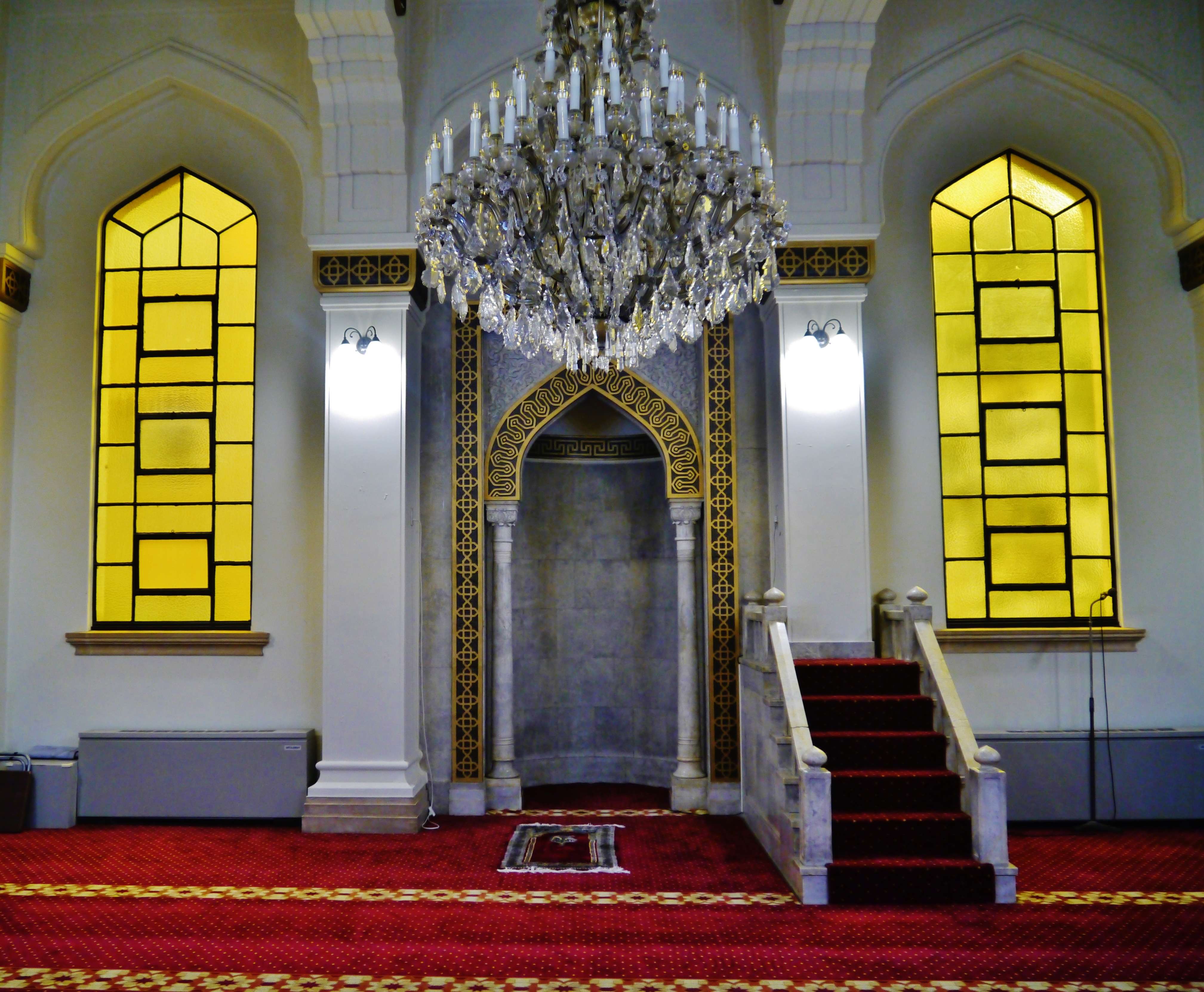Kobe Mosque on:
[Wikipedia]
[Google]
[Amazon]
, also known as , was founded in October 1935 in


Kobe
Kobe ( ; , ), officially , is the capital city of Hyōgo Prefecture, Japan. With a population of around 1.5 million, Kobe is Japan's List of Japanese cities by population, seventh-largest city and the third-largest port city after Port of Toky ...
and is Japan
Japan is an island country in East Asia. Located in the Pacific Ocean off the northeast coast of the Asia, Asian mainland, it is bordered on the west by the Sea of Japan and extends from the Sea of Okhotsk in the north to the East China Sea ...
's first mosque
A mosque ( ), also called a masjid ( ), is a place of worship for Muslims. The term usually refers to a covered building, but can be any place where Salah, Islamic prayers are performed; such as an outdoor courtyard.
Originally, mosques were si ...
introduced Islam to Kobe in 1935. It is situated in the Hyōgo Prefecture city of Kobe. Established in October 1935, it holds historical significance as a symbol of the early presence of Islam in Japan. Its construction was funded by donations collected by the Islamic Committee of Kobe from 1928 until its opening in 1935. The mosque was confiscated by the Imperial Japanese Navy
The Imperial Japanese Navy (IJN; Kyūjitai: Shinjitai: ' 'Navy of the Greater Japanese Empire', or ''Nippon Kaigun'', 'Japanese Navy') was the navy of the Empire of Japan from 1868 to 1945, Potsdam Declaration, when it was dissolved followin ...
in 1943, survived airaids in 1945, and withstood the Great Hanshin earthquake
The Great Hanshin Earthquake (, ) occurred on January 17, 1995, at 05:46:53 JST in the southern part of Hyōgo Prefecture, Japan, including the region of Hanshin. It measured 6.9 on the moment magnitude scale and had a maximum intensity of 7 o ...
of 1995. It is located in the Kitano-cho foreign district of Kobe, one of the city's best-known tourist areas which features many old western style buildings.
The mosque was built in traditional Indo-Islamic style by the Czech architect Jan Josef Švagr (1885–1969), the architect of a number of Western religious buildings throughout Japan.
In addition to its architectural and historical significance, the mosque serves as a focal point for Japan's Muslim community. Over the years, it has become one of more than 113 mosques across Japan.
History
The Kobe Mosque's construction, initiated by the Islamic Committee of Kobe in 1928, overcame financial and logistical hurdles. Confiscated by the Imperial Japanese Navy in 1943 duringWorld War II
World War II or the Second World War (1 September 1939 – 2 September 1945) was a World war, global conflict between two coalitions: the Allies of World War II, Allies and the Axis powers. World War II by country, Nearly all of the wo ...
, its restoration efforts epitomized resilience amidst wartime adversities, highlighting the community's commitment to their faith. Surviving the 1945 air raids largely unscathed, the Kobe Mosque emerged as a symbol of hope amidst devastation, showcasing its cultural and historical significance. Similarly, during the Great Hanshin earthquake of 1995, though damaged, the mosque stood as a pillar of strength, continuing to serve as a vital center for worship, community, and resilience for Kobe's Muslim community and beyond. Its endurance through these trials has earned it the moniker of the "Miracle Mosque."

Architecture
Constructed in 1935 by the Takenaka Corporation, the mosque has a reinforced concrete structure. Its architectural style is a fusion of traditional Asian-Turkish influences. Designed by renowned architect Jan Josef Švagr, the mosque features intricate patterns, domes, and minarets, symbolizing the cultural exchange between Japan and the Islamic world. Located at 2 Nakayamate Douri, Chuo-Ku, Kobe City, Hyogo Prefecture, the mosque spans three levels above ground and one underground level. Its roofing comprises a combination of flat roofs and domes with wooden structures and copper roofing. The walls are finished with exposed-aggregate, adding to the mosque's aesthetic appeal.
Community impact
The Kobe Mosque stands as a center for the local Muslim community in Kobe, Japan. Apart from being a place for worship, it participates in various outreach programs and cultural events, reaching out to engage with the broader community. Through initiatives such as interfaith dialogues, language classes, and community service projects, it promotes understanding and collaboration among people of different cultural and religious backgrounds. Moreover, the presence of the Kobe Mosque contributes significantly to the multicultural identity of Kobe. It serves as a symbol of diversity and inclusivity, bringing together individuals from various cultural and religious backgrounds.See also
*Islam
Islam is an Abrahamic religions, Abrahamic monotheistic religion based on the Quran, and the teachings of Muhammad. Adherents of Islam are called Muslims, who are estimated to number Islam by country, 2 billion worldwide and are the world ...
* Islam in Japan
* List of mosques in Asia
*Religion in Japan
Religion in Japan is manifested primarily in Shinto and in Buddhism, the two main faiths, which Japanese people often practice simultaneously. Syncretic combinations of both, known generally as , are common; they represented Japan's dominant ...
References
External links
* {{Authority control 1935 establishments in Japan Buildings and structures in Kobe Mosques completed in 1935 Mosques in Japan Religious buildings and structures in Hyōgo Prefecture Tourist attractions in Kobe